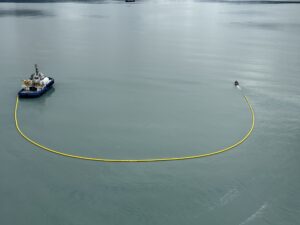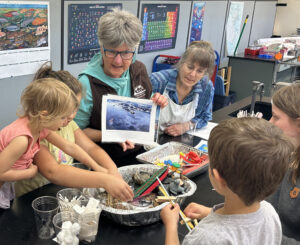By Brandon Kilian, SERVS Response Coordinator

At Alyeska’s Ship Escort Response Vessel System, or SERVS, we believe in zero injuries or incidents every day. Working in a high-risk industry and marine environment, we not only strive to do better every day but also understand that all accidents are preventable through rigorous safety measures and a culture of vigilance. Mindsets are particularly critical in oil spill prevention and response, where the stakes for human safety and environmental health are exceedingly high.
Preventing spills requires many hours of instructor-led training, conducting exercises, meticulous equipment maintenance, state-of-the-art technology, and adherence to strict safety protocols. On average, SERVS performs more than 100 training exercises and deployments every year. One example, tug U and J boom deployments, are conducted in the Port of Valdez for each escort tug. These deployments are a collaborative effort between Alyeska and Edison Chouest Offshore team members.
Prior to the deployment, objectives, expectations, weather considerations, and other recreational activities within the port are discussed with the participating team members. Known and potential hazards are identified for mitigation efforts. The deployment involves all tug crew members, and each has a role for in the deployment’s success.
After the tug’s work boat is splashed and boom deployed, the tug and work boat communicate and coordinate speed and heading while the boom forms U and J shapes between boats. The tug and work boat are expected to hold their ‘U’ formation and perform several 90-degree turns, then maneuver into a ‘J’ formation. Once the ‘J’ formation is complete, a skimmer is deployed to the water to simulate product recovery. Once all the objectives of the exercise are met, the exercise is complete and the crew works to recover, clean, and stow the response equipment. Team members meet afterwards to discuss post-deployment comments, concerns, and learning opportunities.
SERVS conducts these training evolutions so that in the event of an actual spill, a swift and coordinated response can be executed to mitigate impact to wildlife and the environment. We don’t train until we get it right; we train until we can’t get it wrong. Success in these endeavors hinges on something we all know working on TAPS, and that is teamwork; every team member at SERVS is completely committed to safety, collaboration, and clear communication. By working together and holding one another accountable, we can effectively prevent incidents and respond decisively. SERVS embodies the true spirit of Believe in Zero and the constant safeguarding of both people and Prince William Sound.

